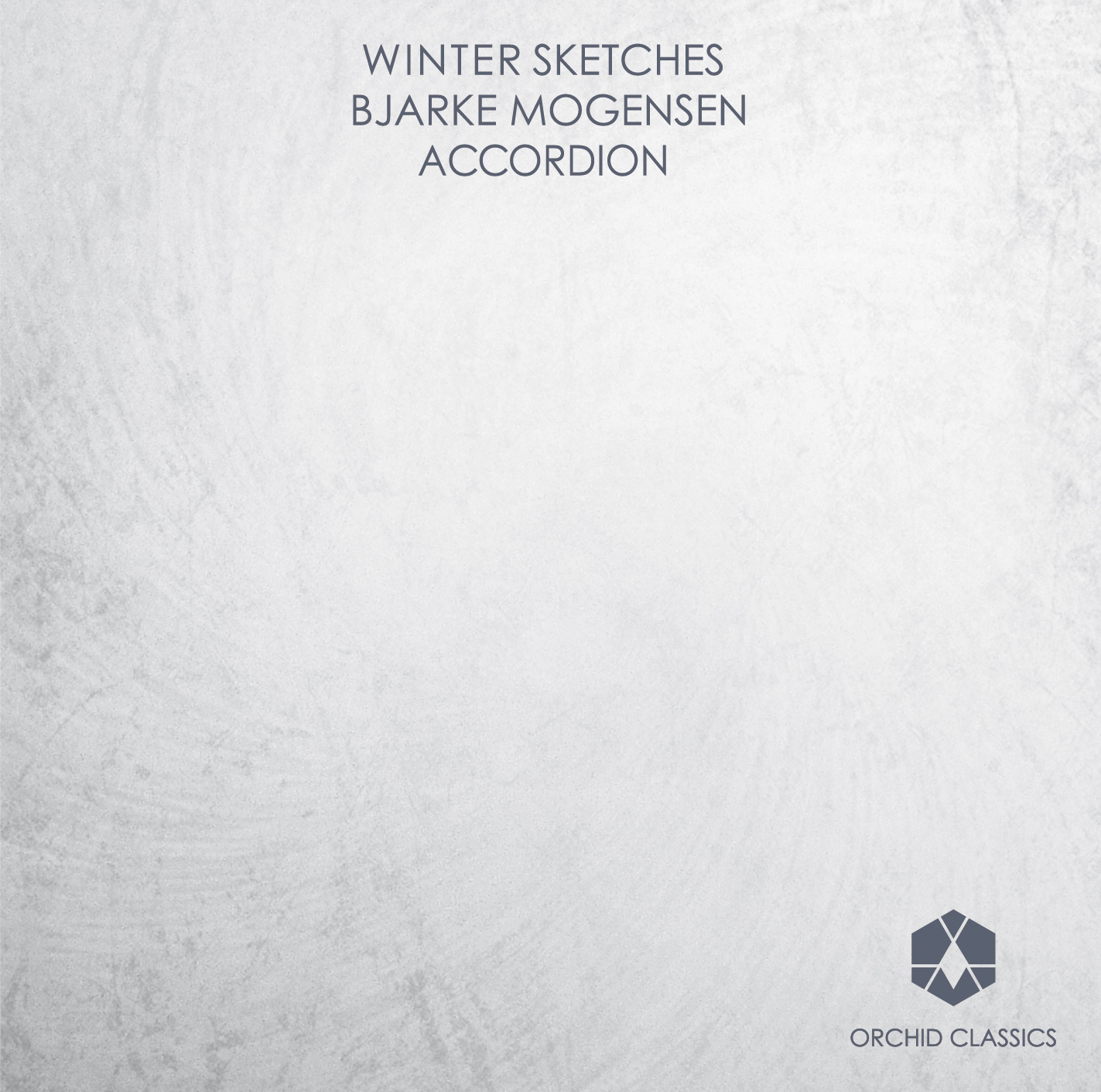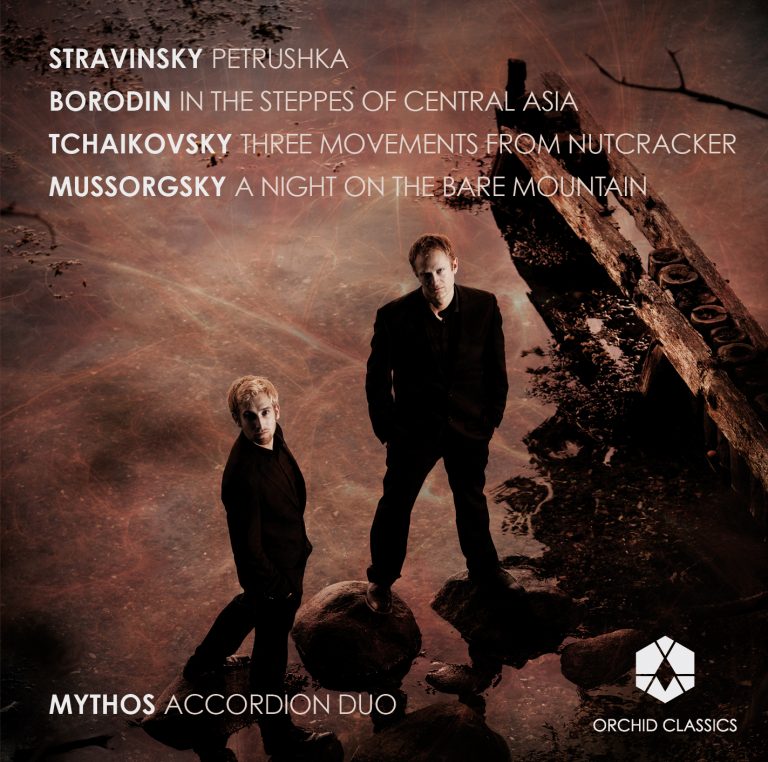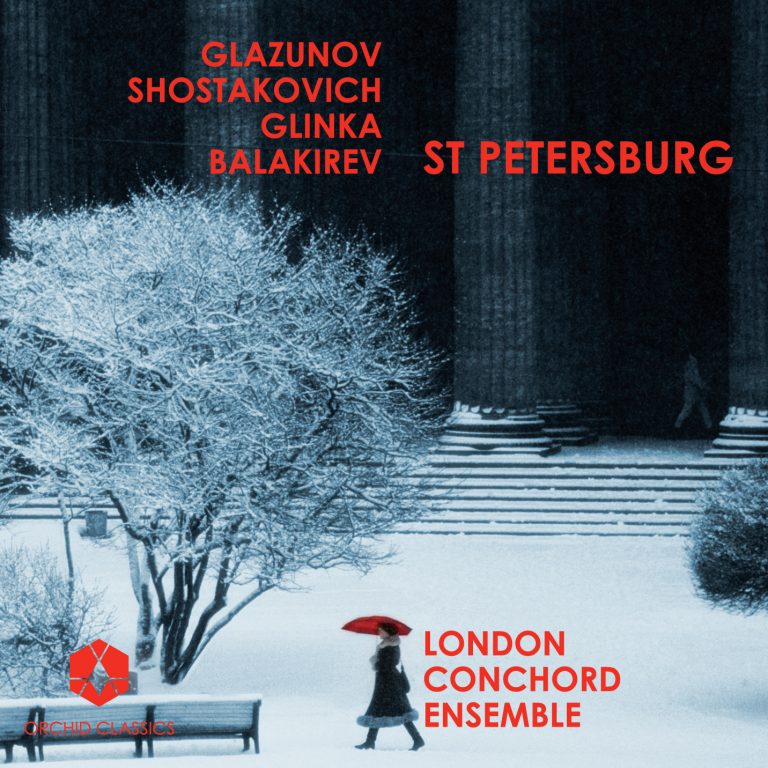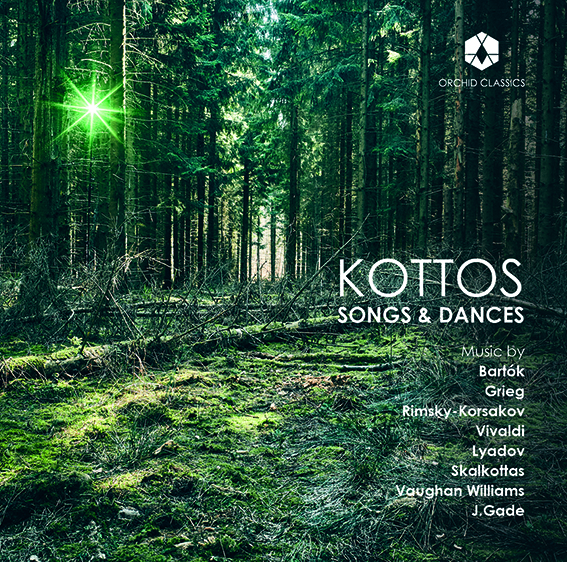Artist Led, Creatively Driven

Winter Sketches
Bjarke Mogensen
Release Date: February 2011
ORC100015
WINTER SKETCHES
TRAD. arr. IVAN YAKOVLEVICH PANITSKY (1906 -1990)
Fantasy on Oi da, Snowball Tree
TRAD arr. PYOTR PETROVICH LONDONOV (1928-1981)
Two Russian Folk Songs
VLADISLAV SOLOTARYOV (1942-1975)
Chamber Suite
ALBIN REPNIKOV (1932-2007)
Capriccio
PIOTR ILYICH TCHAIKOVSKY (1840-1893) arr. BJARKE MOGENSEN
Russian Dance
Nocturne
VYACHESLAV SEMYONOV (b.1946)
Kalina Krasnaya
MODEST PETROVICH MUSSORGSKY (1839-1881) arr. BJARKE MOGENSEN
In the Village
SERGEY SERGEYEVICH PROKOFIEV (1891-1953)
March
Scherzo
ALEXANDER NA YUN KIN (b.1954)
Fantasy on Two Russian Themes
TRAD. arr. VYACHESLAV GERASIMOVICH CHERNIKOV (1947-1994)
Ei Ukhnem!
ANATOLY IVANOVICH KUSYAKOV (1945-2007)
Winter Sketches
Bjarke Mogensen, accordion
This recording has been made with the generous support of the Danish Arts Council
WINTER SKETCHES
Most musical cultures seem to embrace the accordion in their folk tradition: the Polish Polka, the French Musette, the Argentinian Tango, the Bulgarian Horo – the list goes on. For my part, while enjoying all of the various traditions, I feel a strong connection to the accordion folk music of Russia. It was in Russia that the first accordion instruments were invented, and, through the following century, improved – gradually evolving into the most advanced instrument of the accordion family, the “bayan“ (a word known from ancient Russian legends, meaning “troubadour”).
The bayan holds a great place in Russian musical life. The first concertos were written in Russia, and some of the most prestigious composers in both folk and contemporary music have written important works for the instrument.
As early as the 19th century Piotr Ilyich Tchaikovsky used the instrument in his Orchestral Suite No.2 (1883), including four accordions in the scherzo movement. The instrument of that time, however, had a very poor sound, was technically primitive and could add only a little colour to the orchestration.
Half a century later, the great Russian composer Sergey Prokofiev made a similar attempt, including a bayan ensemble in his Cantata for the 20th Anniversary of the October Revolution.
Being perhaps the most lyrical of all chord instruments, the accordion/bayan seems naturally suited to solo arrangements of melancholy Russian folk songs. Many of the most gifted composers and arrangers of folk music in Russia have contributed to a huge quantity of arrangements and pieces based on or inspired by Russian folk songs. On this CD I have collected a selection of these works, mixed with my own transcriptions of miniatures by musical giants such as Mussorgsky, Tchaikovsky and Prokofiev.
Ivan Yakovlevich Panitsky (1906 -1990) was born in the Balakovo Saratov region where he studied to be a violinist. However, he also mastered several instruments of the accordion family, including the harmonica, accordion and bayan. Panitsky made a number of arrangements for the bayan, such as the fantasy on the Russian folk song Oi da, Thou Little Snowball Tree. This piece resembles Russian choral music, with powerful harmonies and gentle melancholy.
Two Russian Folk Songs is another example of a progressive approach to folk song interpretation. Pyotr Petrovich Londonov (1928-1981) wrote a large number of works for the bayan, including a sonata, contrapuntal studies and a concerto for bayan and folk-instrument orchestra. His arrangement of the two folk songs is jazzy, virtuosic and humorous, using teasing dissonances throughout the piece.
Vladislav Solotaryov (1942-1975) wrote a large number of teaching pieces and advanced works, which partly cover the lack of romantic repertoire for the instrument. The Chamber Suite is a series of small pieces, depicting various images. The meditative mood of the pieces is supported by a delicate dynamic, kept in a calm melancholy character. The suite was inspired by writings of the Russian poet Alexander Blok, and was dedicated to the composer’s wife.
Besides being a virtuoso bayanist and renowned teacher, Albin Repnikov (1932-2007) was also the creator of a large amount of concertos, sonatas and suites for bayan. His pieces are generally considered classics in the repertoire of accordionists and bayanists around the world. Capriccio (1960) is probably his best known solo composition. The piece is clearly folk-inspired and opens with a melancholy introduction, followed by a Scherzo in changing time signatures. The piece has a southern flavour and could be seen as a homage to Rimsky-Korsakov‘s Spanish Capriccio or Tchaikovsky‘s Capriccio Italienne, bringing out the orchestral colours of the bayan.
Piotr Ilyich Tchaikovsky (1840-1893) wrote symphonies, operas, ballets, concertos and solo pieces for various instruments. He left numerous works of immortal quality, which to this day are among the most loved and often performed pieces of music in the entire literature.
The Nocturne and the Russian Dance are two miniatures from different collections of piano pieces. The latter is particularly well known from the famous ballet Swan Lake.
Vyacheslav Semyonov (b.1946) is viewed as a pioneer of the performance school of bayan. He has taught at the Rostov Musical Pedagogical Institute and is currently teaching at the Gnessin Musical Institute, where he is head of the Bayan Department. His large production of works for bayan is marked by a refined knowledge of the instrument’s sound qualities and technical possibilities. His fantasy on a theme by Jan Frenkel, Kalina Krasnaya, is frequently performed by players around the world, and is considered a classic in the repertoire of accordionists. The sorrowful mood of the piece depicts the loss of a friend, to whom the work is dedicated. The climax, a sudden dissonant pedal point describing the point when death occurs, adds a tragic conclusion to the piece.
Modest Petrovich Mussorgsky (1839-1881) was one of the most original Russian composers of the 19th century. His great feeling for creating pictures in music is well demonstrated in his piano miniature, In the Village. The opening chorale begins with a distant melody, as if we are seeing the village from afar, and intensifies through powerful harmonies. Nearing the village, we reach the part entitled “Alla Zingarese“, a typical Russian folk dance characteristically emphasizing the second beat in 2/4 time.
Sergey Sergeyevich Prokofiev (1891-1953) is hailed as one of the greatest composers of the 20th century. He mastered a wide range of genres – symphonies, concertos, film music, operas, ballets and even music for athletic exercises. The March and Scherzo are from his famous opera The Love for Three Oranges. The transcription is based on Prokofiev’s own piano arrangements of the orchestral score.
Alexander Na Yun Kin (b.1954) was born in the Balakovo Saratov region and is now a famous bayan player and teacher. His Fantasy on Two Russian Themes consists mainly of folk tunes arranged for bayan. Often using elements from gipsy and jazz music in his compositions, Na Yun Kin is, in his Fantasy, clearly inspired by American bee-bop music. One of the themes was also used by another Russian, Mikhail Glinka, in his orchestral work Karaminskaya.
Ei Ukhnem! tells of the Volga boatmen hauling the barges up the Volga and is one of the best known Russian songs. This inventive little arrangement, with its dissonant chords that fully exploit the quasi-orchestral power of the bayan, was made by the composer/bayanist Vyacheslav Gerasimovich Chernikov (1947-1994).
Anatoly Ivanovich Kusyakov (1945-2007) was a professor of composition at the conservatory at Rostov-on-Don. He wrote a large number of works for bayan. Winter Sketches is a suite in six movements, each one a picture painted with great imagination, and linked to the others in a connecting narrative. Thus the suite follows the great tradition of Modest Mussorgsky and his epic piano cycle Pictures at an Exhibition.
© 2011 Bjarke Mogensen
BJARKE MOGENSEN
Bjarke Mogensen (b.1985) is the ‘rising star’ among accordionists in a country with a rich accordion tradition. He was born and raised on the Danish island of Bornholm, which, remotely placed as it is in the Baltic, is more or less culturally self-sufficient, and therefore enjoys a great wealth of creativity. Bjarke became part of this musical culture when he began playing accordion at the age of seven and reached an exceptional standard within a few years. Today he is much in demand as a soloist and chamber musician, mastering a wide repertoire of original literature as well as transcriptions for the instrument. He also teaches chamber music at the Royal Danish Academy of Music.
After making his debut as a soloist, aged only 13, in a live TV broadcast with the Munich Symphony Orchestra, Bjarke went on to study with Geir Draugsvoll at the Royal Danish Academy of Music, and has since performed with the Danish National Symphony Orchestra, Copenhagen Philharmonic, Danish National Chamber Orchestra and Aarhus Symphony Orchestra, amongst others, under the baton of conductors such as Lan Shui, John Storgårds and Jean Thorel.
Bjarke has been awarded numerous grants and has won prizes in several international music competitions in Denmark, Italy and Germany. In 2006 he won first prize in the Danish Radio and TV competition for young instrumentalists ‘Play for Life’. Two years later he once again appeared on Danish television, this time profiled in a documentary which also showed him performing in duet with Gidon Kremer and ‘Kremerata Baltica’.
He has also performed with notable artists such as Augustin Dumay, Marc Coppey, Kim Sjögren, Andreas Brantelid and the Danish poet Benny Andersen, and he is currently member of a number of duos and ensembles. As he takes a profound interest in contemporary music, he has given first performances of works dedicated to him by a number of composers, including Anders Koppel, Christos Farmakis, Martin Lohse, Jexper Holmen and Kasper Rofelt. In addition to this, Bjarke himself also makes his own solo arrangements from the piano, organ and orchestra literature.
‘…Mogensen is amazing… This is some of the most persuasive music making you will ever hear…’ (Norman Lebrecht’s CD of the Week, March 27, 2011) 










